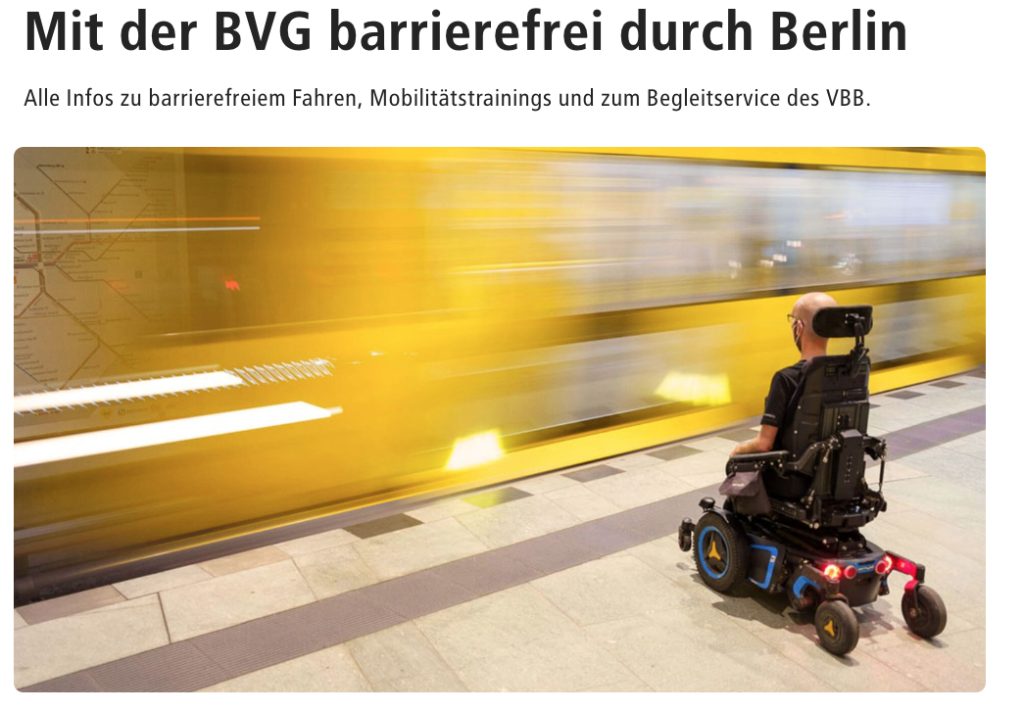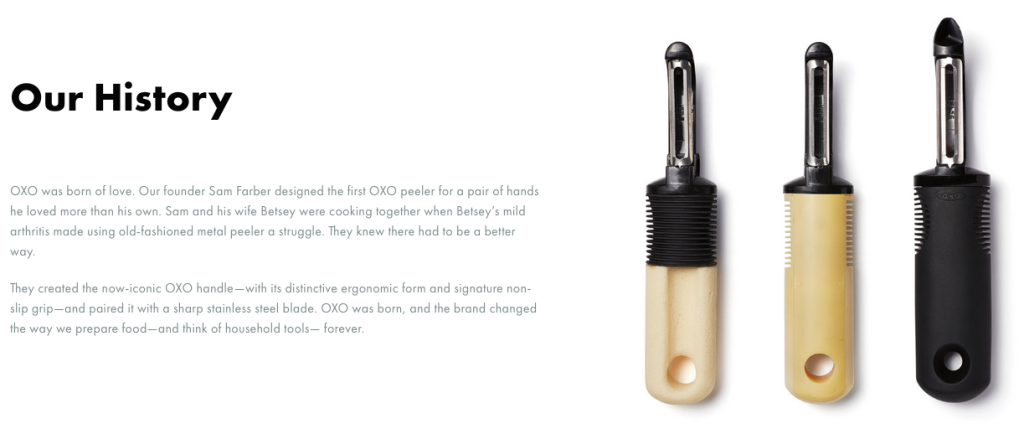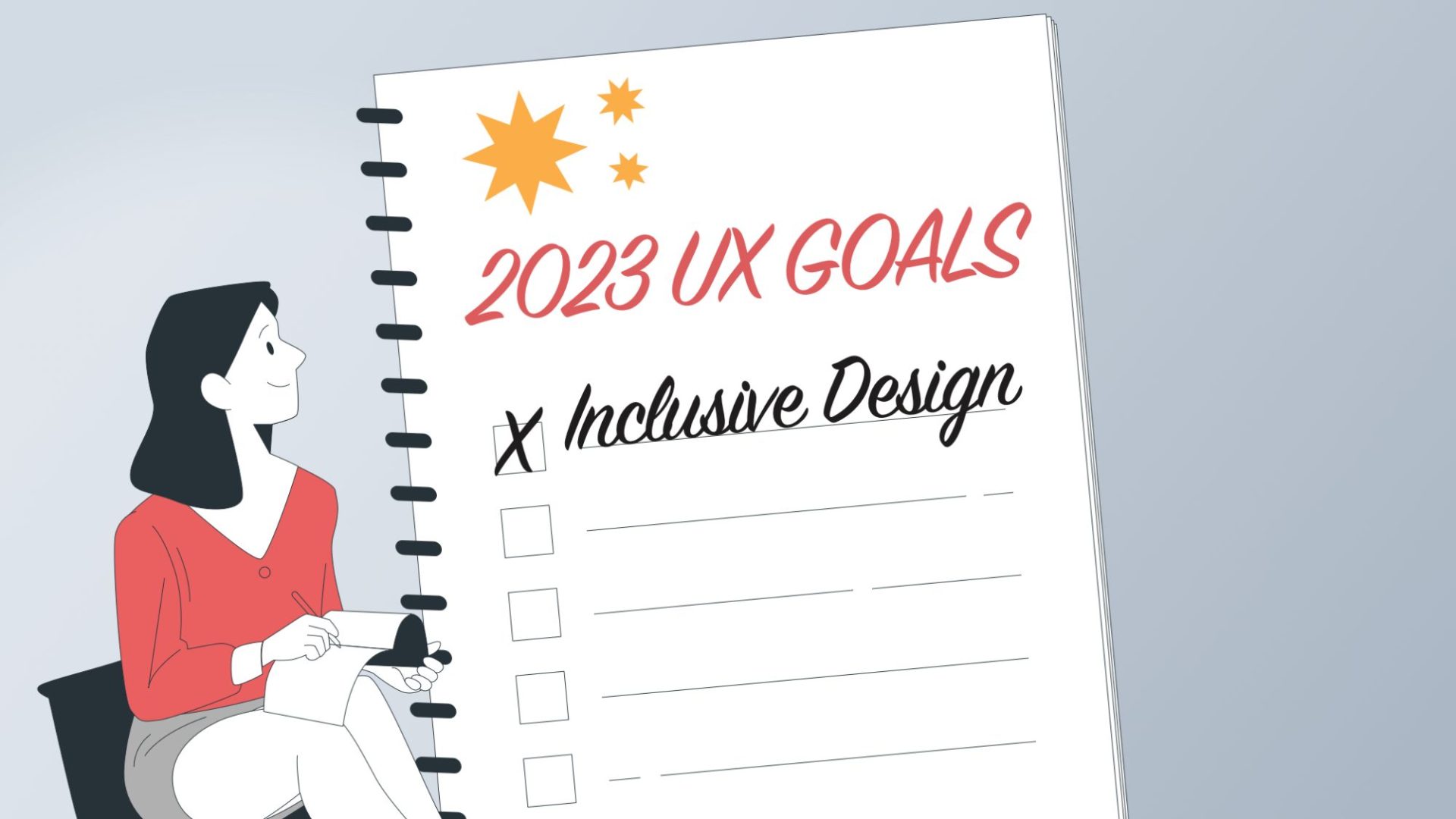A heartfelt Happy New Year from us!
As we did in 2020, we will present topics of importance to us in this series of articles. Topics increasingly discussed in the industry and relevant to product and service development in companies – that is, to Product Managers, Developers, UX Designers, and the company itself.
We have so many topics that we decided to split them into smaller bite-sized articles, starting with an old acquaintance – an evergreen, so to speak:
Inhaltsverzeichnis:
Inclusive Design
We wrote about the importance of Inclusive Design and the consideration of Diversity in Design for the first time three years ago in 2020. In 2023 it remains a hot topic for product development, UX professionals and most companies.
Generally speaking, Inclusive Design refers to designing products and services that are accessible, usable, and helpful for all people, regardless of their abilities, limitations, and socio-economic background.
The business case for Inclusive Design is evident. It benefits companies and customers, as increased customer satisfaction usually leads to new market segments opening up.
Inclusive Design can also lead to cost savings for a company. By focusing on accessibility and user-friendliness right from the get-go, companies can avoid costly retrofits or changes post-launch. A striking negative example of skyrocketing costs due to retrospectively fixing problems is evident in our cities: wheelchair users and mothers with strollers need assistance to access subway platforms because there is still a lack of barrier-free access to the subway network. The required retrofits: very costly and time-consuming, sometimes almost impossible. Additionally, cities have disappointed individuals practically left out in the rain. “You’re not disabled, you’re being disabled.” unfortunately is a sad but true phrase used by activists.
Inclusive Design Means Destigmatization: Best Practices
Alan Cooper contemplated Inclusive Design as early as 2004 in his book “The Inmates are running the Asylum” because his concept of persona development aims at Inclusive Design. From his book “About Face”: “A primary persona will not be satisfied by a design targeted at any other persona in the set. However, if the primary persona is the target, all other personas will not, at least, be dissatisfied.” In other words, the main design target (the primary persona) should include all other design targets (secondary personas) – the primary persona should have the highest possible degree of inclusion.
If, for example, a subway arrives at a station allowing level boarding, the station meets the needs of wheelchair users and all other users. It would therefore make sense that wheelchair users represent the primary persona/main design target. For wheelchair users, the product “Subway” is usable: they do not need assistance, feel less restricted, and nobody else suffers a disadvantage from the design solution.

Figure 1: best practice Inclusive Design by BVG. People with disabilities could be the primary personas for public transport. Level accessibility is a win-win for everyone. Image from: https://www.bvg.de/de/service-und-kontakt/barrierefrei-unterwegs
Cooper also explicitly cites OXO Good Grips as an example in “About Face.” The design of OXO household items meets the needs of users with arthritis. The goal was not only to design cooking utensils that are comfortable to hold but also to set a new aesthetic trend that would not stigmatize the intended user as “sick” – as other products for people with arthritis did. This unprecedented aesthetic for arthritis-friendly household utensils started a new trend, and the products became viable and attractive solutions for all potential customers – not just people with arthritis. Meanwhile, OXO Good Grips is one of the market leaders worldwide for household items.

Figure 2: best practice Inclusive Design by OXO Good Grips: OXO Good Grips household utensils are designed for people with arthritis – but appeal to people with and without arthritis.
Companies benefit from Inclusive Design
In summary, the business case for Inclusive Design is evident. It can increase market potential, customer satisfaction and loyalty, and brand reputation while saving costs. It benefits both the company and its customers as the improved user experience makes it more accessible for everyone.
At this point, we would like to take a closer look at a topic related to Inclusive Design that is being increasingly discussed in the industry: neurodiversity.
Neurodiversity
What is Neurodiversity?
When discussing inclusion, we also need to talk about “neurological diversity” or neurodiversity. Neurodiversity includes Autism Spectrum Disorder, ADHD, Dyscalculia, Dyslexia, and more. The concept of neurodiversity recognizes that the human brain can be diverse in development and function, challenging the notion of “normality.” Neurodiversity advocates for the understanding that neurological diversity is a form of social diversity, moving away from pathologizing the neurological makeup of individuals as “ill” or “disordered.”
Neurodiversity is as important as other forms of diversity, such as cultural, ethnic, and gender diversity.
Considering neurodiversity in product development
Considering neurodiversity can help make products and services accessible and usable for people with diverse cognitive abilities, spectrums, and limitations.
Taking into account users with Autism, ADHD, or Dyscalculia, for example, can significantly improve the usability of products and services for them. Just as we strive to make designs user-friendly and accessible for individuals with physical or sensory impairments (such as visual impairments), designing for neurodiverse customers can also have implications for product design. For example, studies show that long blocks of text or a cluttered display can overwhelm people with ADHD, while they can become bored or impatient in other instances. Depending on the country, the number of adults with ADHD lies at 5-9%, which is a large number of potential customers to exclude.
Additionally, considering neurodiversity in product development can lead to innovative, novel, and constructive solutions. By conducting targeted research to understand the needs of users with diverse cognitive abilities and limitations, designers can gain new perspectives and insights that inspire new problem-solving approaches. Moreover, designers can create products and services that are more likely to meet the needs of a broader range of users, leading to the exploration of new market segments, increased market share, and satisfied users and customers.
Inclusive Design starts during research
We recommend including a diverse spectrum of individuals/users in the research phase to gain a broad understanding of the needs and perspectives of a variety of users. We recommend involving individuals with various physical or sensory permanent and/or temporary, as well as situation-specific limitations, older people, individuals from different cultural backgrounds, and specifically neurodiverse individuals in interviews and usability testing sessions. Continuously integrating a diverse range of individuals into teams and organizations can help identify and eliminate implicit stereotypes and biases in the design process and implement inclusion by default, leading to fairer and more equitable products or services for all.
Conclusion
Considering and recognizing neurodiversity as part of social diversity in product design can lead to more inclusive, accessible, and innovative products/services. Inclusive Design allows Companies to bring products and services to the market that are more likely to meet the needs of a broader user base, resulting in increased market share and greater customer satisfaction. It is a topic worth keeping an eye on.
Announcement:
In March, Katrin Suetterlin will speak about neurodiversity at the Berlin Ladies that UX meetup. She has dedicated herself to this topic, among others. Stay tuned – we will announce the date on all channels.
Read more:
UX Writing for Everyone: What Neurodiversity Can Teach Us https://medium.com/counterarts/ux-writing-and-neurodiversity-a51a319d8c19
Inclusive design – toolkit and manual https://www.microsoft.com/en-us/design/inclusive http://www.inclusivedesigntoolkit.com/
13 Inspiring Talks on Inclusive Design https://uxmastery.com/15-inspiring-talks-on-inclusive-design/
Image credit: People illustrations by Storyset





